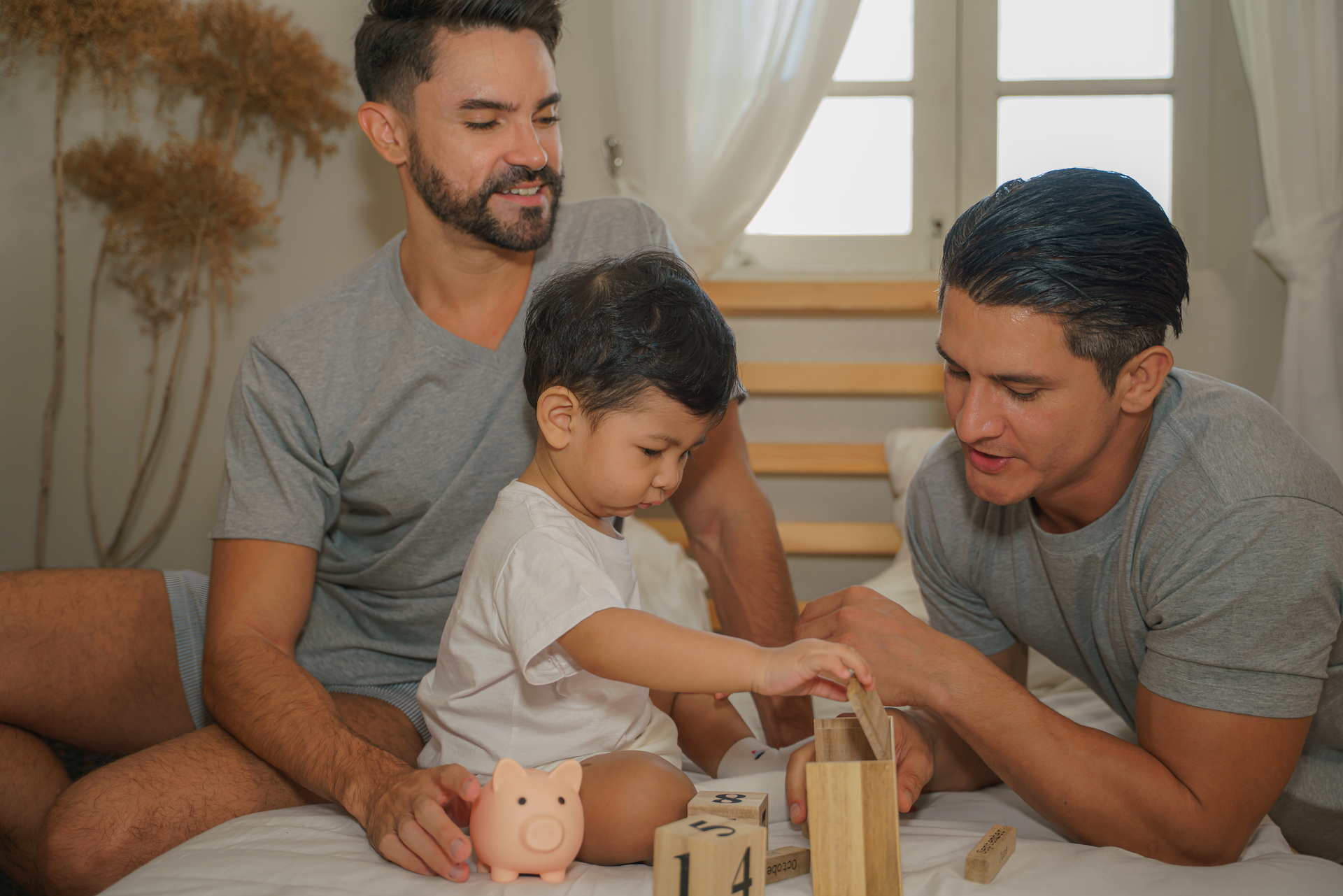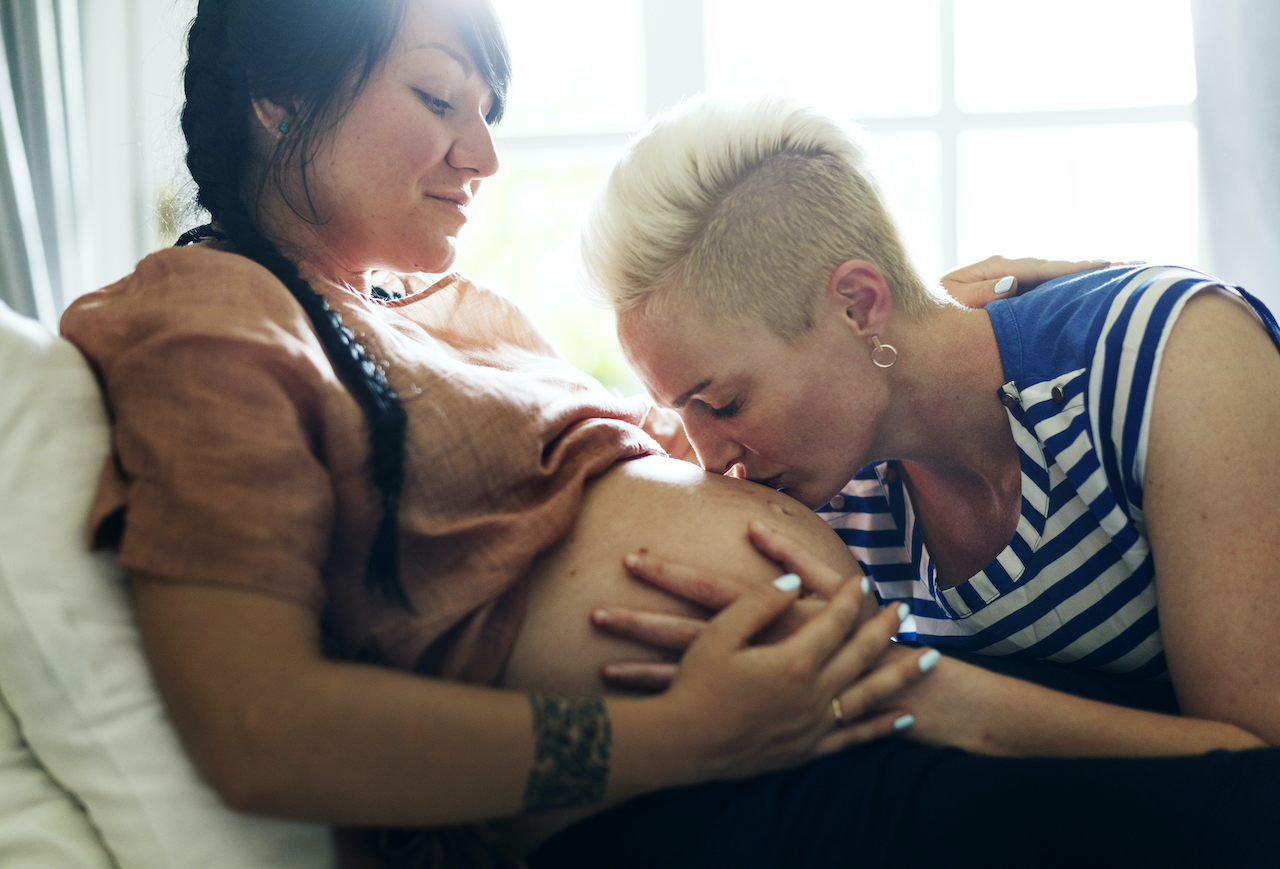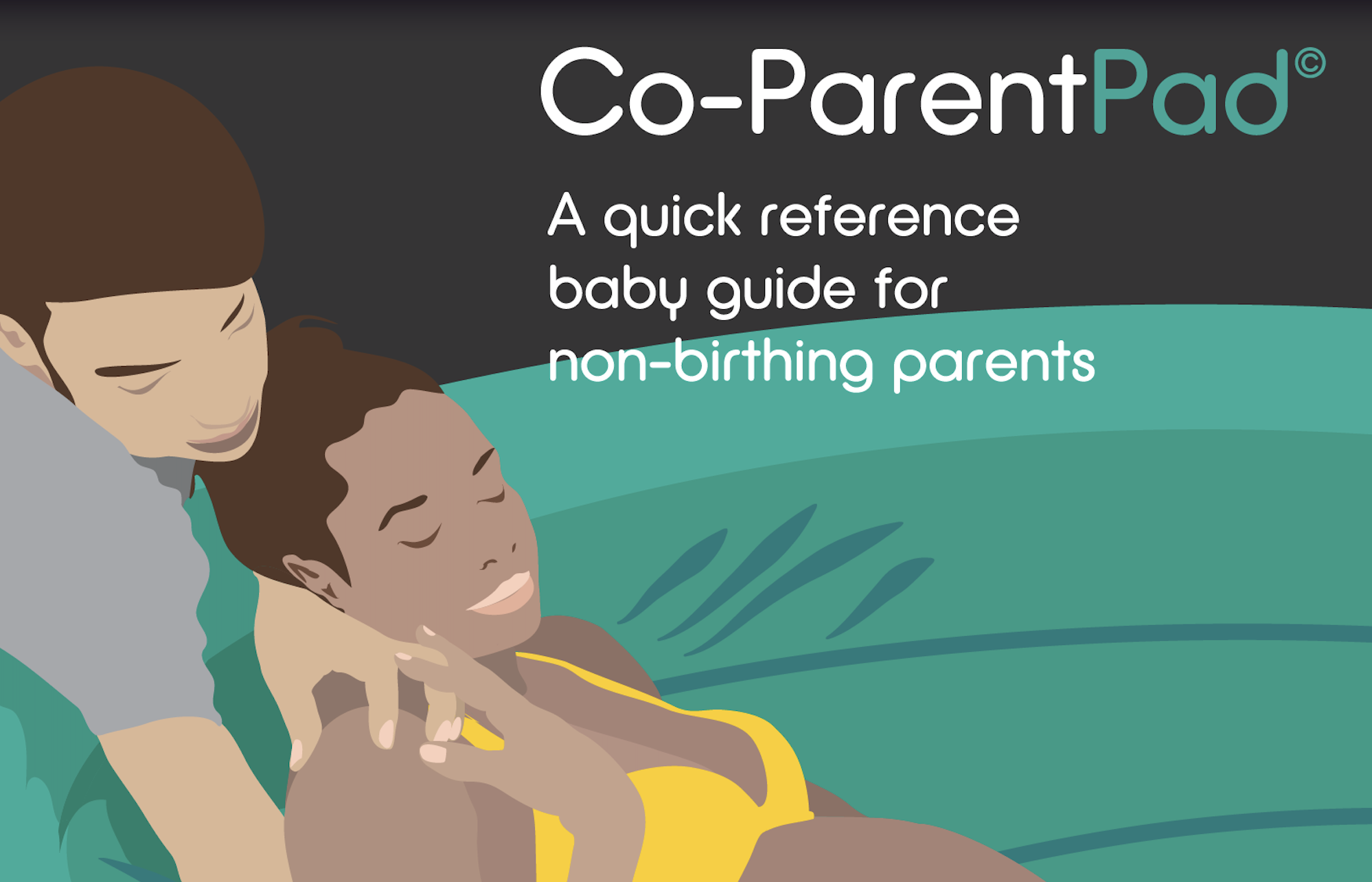
About the Co-ParentPad
About the Co-ParentPad: Why ‘Co-ParentPad’?
Posted on 7th February 2024
Why ‘Co-ParentPad’?
On the whole, we’ve received some truly amazing feedback since we first released and then launched the Co-ParentPad last year. We’ll be sharing some of that in a future blog post.
However, one query we’ve had a couple of times relates to the name that we’ve chosen to give to this resource. Some people were concerned that the use of the phrase ‘co-parent’ solely applied to parents whose relationship have broken down and was therefore inappropriate to use in our intended context…
How did we choose the title?
Hopefully it won’t surprise you to learn that, as with everything we do, the title of the resource is something that we thought long and hard about, and it did go through several ‘test’ versions before we finally decided on the title that we have chosen.
Obviously, our first concern was to use a gender-neutral term, to acknowledge that our intended readership of the Co-ParentPad did not fit into one straightforward category (unlike the DadPad, which has always been intended to be used by male dads in a heterosexual relationship with a birthing female).
A very early idea was to call the resource our ‘PartnerPad’, but we received some really helpful feedback from fellow ‘dadvocate’ and parent support worker, Kieran Anders of Dad Matters UK, reminding us that the focus needed to be on the individual’s relationship with the child (as a parent), as opposed to their relationship with the birthing person (as a partner).
Following this feedback, we decided upon the ‘Co-ParentPad’ at quite an early stage in our development and feedback process (which you can read about in more depth here). This gave us time to properly ‘test out’ the title and – whilst no name will ever be perfect – we felt confident that this was the right one to use. To the best of our knowledge, no-one within our focus group of co-production volunteers (all of whom had expertise, insight into and/or lived-experience of being an LGBTQI+ parent and/or perinatal professional) questioned the name of the resource during this process.
We especially liked the phrase ‘co-parent’ as we felt it provided a clear message of recognition that this non-birthing partner was going to be on an equal footing with the birthing parent, and that the pair would be parenting together, as a team.

So, have we picked the wrong phrase?
Well, according to the Google/Oxford Languages definition, a co-parent is “a person who co-parents a child”, and the meaning of co-parent is to “share the duties of bringing up (a child) (used especially of parents who are separated or not in a relationship).”
To our mind, then, whilst the term can be used to describe parents who are parenting together after a relationship breakdown, this is not the only meaning of the term.
A further look at the term via Wikipedia provides some extra help – and, again, some interpretations that we again feel are useful in relation to our intended demographic for the Co-ParentPad [and, yes, we realise that Wikipedia isn’t always the BEST academic source, but the entry we looked at has been well-referenced, with links to academic articles throughout].
Wikipedia starts by stating (with our addition of bold for emphasis) that:
Co-parenting is an enterprise undertaken by parents who together take on the socialization, care, and upbringing of children for whom they share equal responsibility. The co-parent relationship differs from an intimate relationship between adults in that it focuses solely on the child. The equivalent term in evolutionary biology is bi-parental care, where parental investment is provided by both the mother and father.
This definition really appeals to us as it acknowledges that we are looking at:
- the individual in respect of their relationship with the child: we aren’t considering them with reference to the relationship that they have with another adult, and this was why we moved away from the ‘PartnerPad’ name; and
- a similar concept to that which we’ve always tried to promote and support with our DadPad resources, that of (equal) parental investment by both (all) parents in the child’s life. (This is one of the reasons we always try and avoid phrases like ‘…helping mum with baby’s care…’, as it suggests that mum/the birthing person is always the primary/lead care-giver for the baby, with dad/the non-birthing person as an ‘additional extra’).
It is also a definition (and again this concept is referenced further in the different definitions and ‘versions’ of co-parenting as set out within the Wikipedia page) that can be read to include the potentially wider range of parenting relationships which may exist in relation to a child born to LGBTQI+ parents – where there are more than two people actively involved in the child’s upbringing/supporting the birthing person due to, for example, how the pregnancy was conceived.
The Co-ParentPad can therefore apply to and be used by any (LGBTQI+) non-birthing person who has agreed to play an active role in the upbringing of the child, and not just the individual who is the partner of the (LGBTQI+) birthing person.

Why doesn’t it mention LGBTQI+ on the front cover?
One other thing that has also been raised with us a few times within initial feedback is the lack of an overt reference to same-sex couples in the title and/or a clear indication that the Co-ParentPad is the resource for those parents.
Again, this is something that we did consider in the development process. We purposely avoided using words/phrases like ‘LGBTQI+’ (and all the different versions) and/or ‘same-sex’ in the title as we wanted to leave the use of the resource as open as possible, and not limit its application in any way – i.e. to ultimately be as inclusive as possible of all those people that it can and might apply to.
The important things which we believe make this clear, without being limited in any way by words/via the title, are:
- the strapline that we use whenever we describe the Co-ParentPad on all other occasions – i.e. ‘a quick reference baby guide for LGBTQI+ non-birthing (non-gestational) parents’;
- the huge efforts that our Project Officer and the illustrator that she worked with have gone to to ensure representation within the images of as wide a range of LGBTQI+ people and relationships as possible throughout the guide, including on the cover picture; and
- the topics and content, which were decided upon via our Project Officer’s work, research, meetings and correspondence with the members of our focus groups/co-production volunteers.
We have considered more detailed post-launch feedback from a couple of equality and diversity expert reviewers, though, and we may consider a few tweaks to the front cover in subsequent editions/print runs – such as:
- the fact that the couple pictured on the front cover could be viewed as being a male+female partnership – we recognise that, whilst the image on the cover was chosen because it could be seen as representing a whole range of LGBTQI+ parenting dyads, at first glance it does potentially give the suggestion of a heterosexual male-plus-female couple. We will therefore be considering either using a different image in future editions of the Co-ParentPad, or tweaking the way in which the non-birthing person is presented here, to make the image more obviously representative of an LGBTQI+ couple; and
- the possible use of a rainbow/rainbow flag on the cover – we recognise that there are mixed feelings regarding the use of the rainbow within LGBTQI+ communities, which was why we made the decision to omit it from the cover of the first edition of the Co-ParentPad, but we acknowledge feedback that (whatever an individual’s views of the rainbow) its use does remain a quick and simple way for LGBTQI+ people to recognise that ‘this is something applies to me/us’.

Keep the feedback coming!
We hope that this blog post helps clarify any concerns that individuals may have regarding the name and the front cover of the Co-ParentPad.
Despite having undertaken three years of development, research and interactions with experts, we fully concede that we still may have missed something major/that things might change and – again, as with our DadPad/dad-focused products – will always be wanting to make updates and amendments to ensure our resources are the absolute best that they can be.
If you have any further concerns or feedback points regarding the Co-ParentPad, we’d love to receive them, especially as we are getting ready to put a second print run together. Please email us via hello@thedadpad.co.uk.

